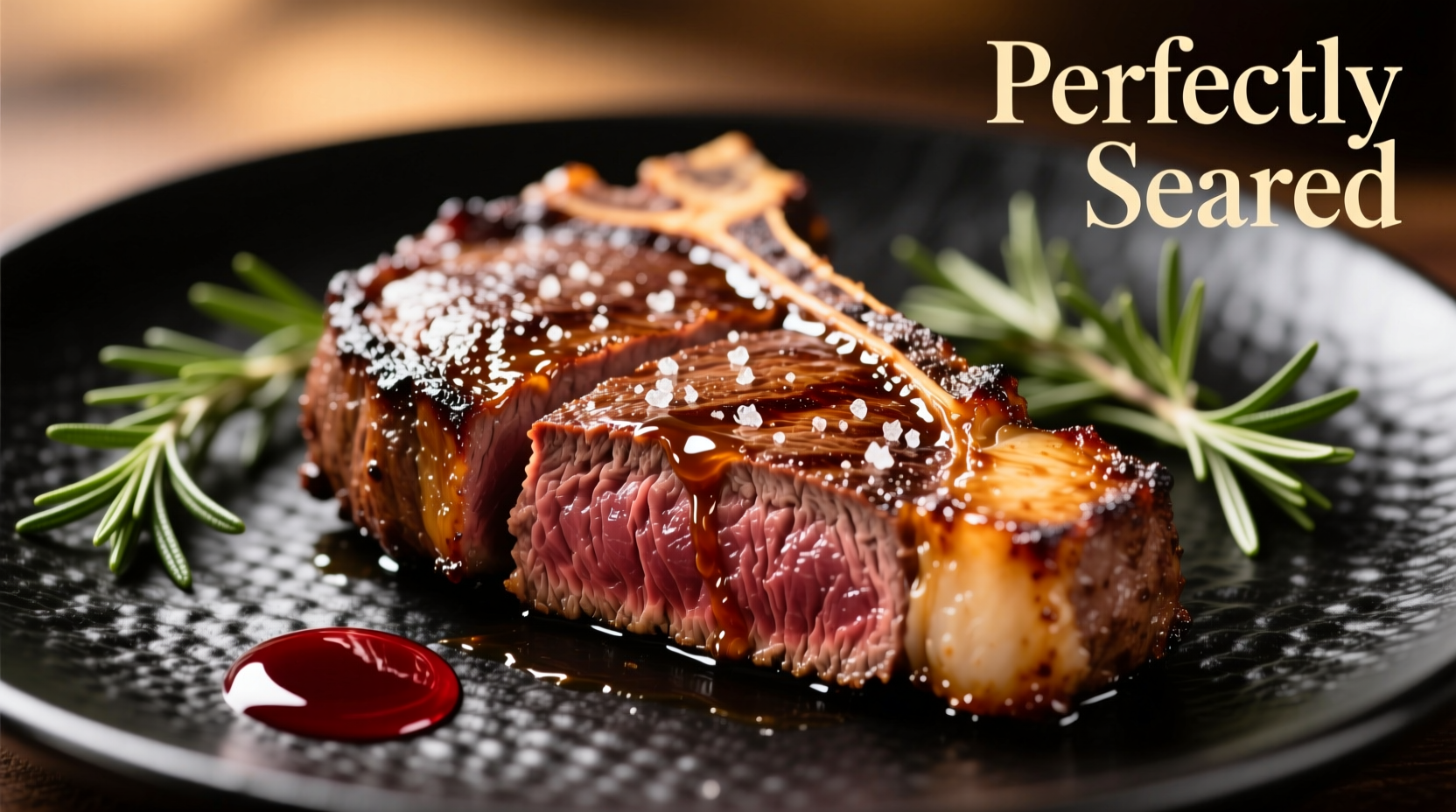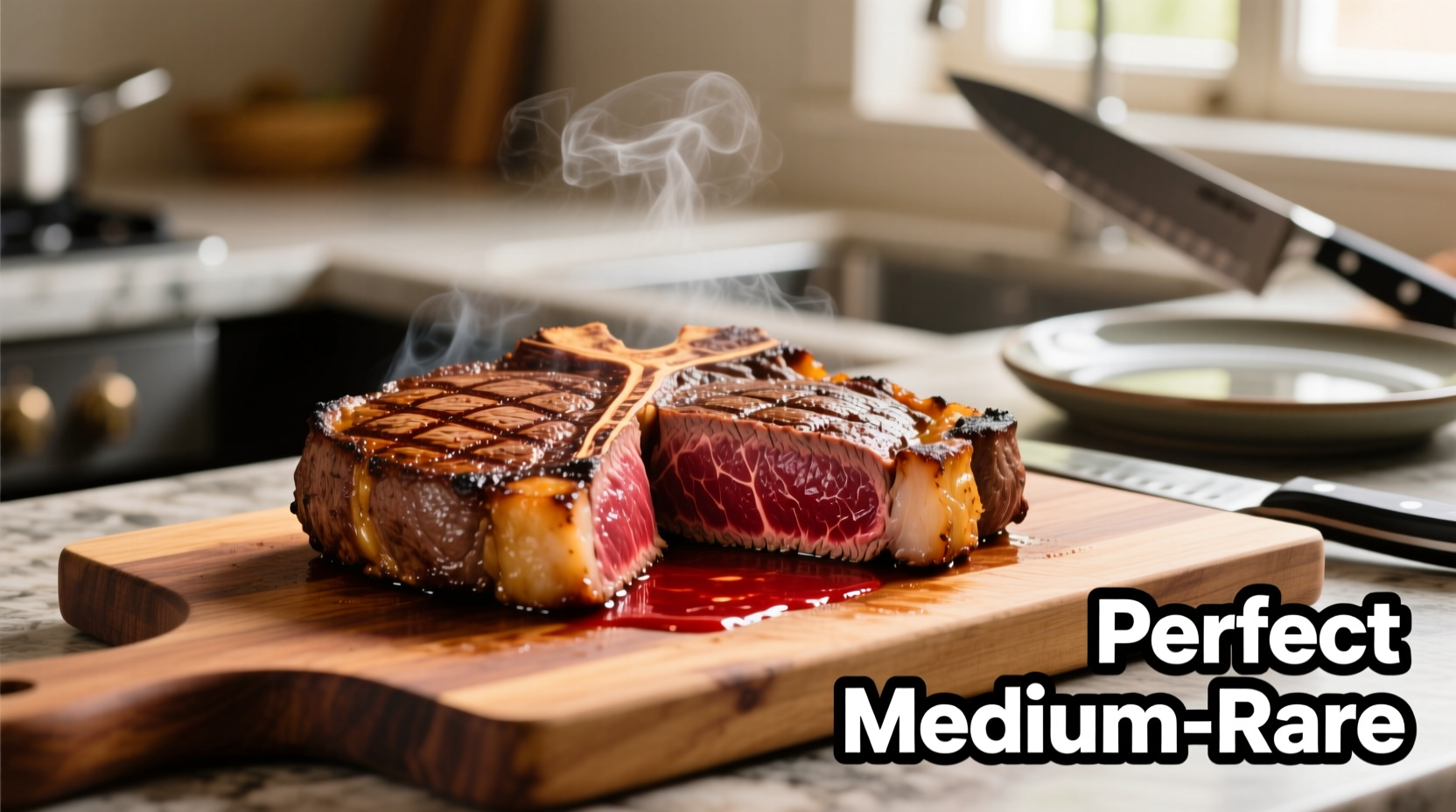The perfect ribeye steak requires USDA Prime-grade beef, 1-1.5 inch thickness, 45-60 minutes at room temperature, high-heat searing (400-450°F), precise internal temperatures (125°F for medium-rare), and 8-10 minutes resting time. Follow these science-backed steps for restaurant-quality results every time.
Ever wonder why your ribeye steak never matches the juicy perfection you get at top steakhouses? The secret isn't expensive equipment—it's understanding the precise sequence of preparation, cooking, and resting that transforms a great cut into an extraordinary meal. After decades of testing techniques from culinary institutes to professional kitchens, we've distilled the exact method that guarantees a perfectly caramelized crust with tender, evenly cooked interior.
Selecting Your Foundation: The Ribeye Selection Process
Not all ribeyes deliver equal results. Your starting point determines 70% of your final outcome. USDA Prime grade offers superior marbling (8-10% fat content) compared to Choice (5-7%) or Select (less than 4%). Look for even marbling distribution—not just visible fat streaks but fine webbing throughout the muscle. Thickness matters: 1.25 to 1.5 inches provides optimal heat penetration without overcooking edges before the center reaches target temperature.
| USDA Grade | Marbling Percentage | Best Cooking Method | Flavor Intensity |
|---|---|---|---|
| Prime | 8-10% | Pan-sear + oven finish | ★★★★★ |
| Choice | 5-7% | Reverse sear | ★★★★☆ |
| Select | <4% | Low-temp sous vide | ★★★☆☆ |
This USDA grading comparison shows why Prime ribeye consistently outperforms other grades for traditional high-heat cooking. The higher fat content creates superior flavor development during the Maillard reaction while protecting against drying.
Preparation Protocol: The 90-Minute Rule
Temperature equilibrium is non-negotiable for even cooking. Remove steak from refrigerator 45-60 minutes before cooking—this isn't optional resting time but essential thermal preparation. Pat completely dry with paper towels; surface moisture prevents proper searing. Season generously with 1 teaspoon kosher salt per pound 40 minutes before cooking, allowing salt to penetrate while drawing out excess moisture. Avoid pepper before cooking—it burns at high temperatures; add after searing.
The Searing Sequence: Precision Heat Management
Preheat cast-iron skillet or grill to 400-450°F (204-232°C)—critical for proper crust formation without overcooking. Add high-smoke point oil (avocado or grapeseed) just before steak placement. Place steak away from you to prevent oil splatter injuries. Press gently for full surface contact, but don't move for 2.5-3 minutes to develop crust.
Flip using tongs only once—frequent flipping disrupts crust development. For thick cuts (over 1.5 inches), finish in 350°F (177°C) oven until reaching target internal temperature. Use an instant-read thermometer: 125°F (52°C) for medium-rare, removing from heat at 120°F (49°C) to account for carryover cooking.

The Critical Resting Phase: Why 8 Minutes Changes Everything
Resting isn't passive waiting—it's active redistribution. During cooking, juices migrate toward the center. Resting allows reabsorption throughout the muscle fibers. Place steak on warm plate (not cold surface) and tent loosely with foil. The optimal window is 8-10 minutes for 1-1.5 inch steaks. Cutting too soon releases up to 30% more juice according to American Meat Science Association studies.
Context Boundaries: When Techniques Fail
Understanding limitations prevents kitchen disasters. The reverse sear method (low oven then sear) works best for steaks thicker than 1.75 inches but fails with thinner cuts that overcook during searing. Cast-iron provides superior heat retention for crust development but requires proper seasoning—non-stick pans won't achieve proper Maillard reaction. Never use a fork to flip steak; the punctures release precious juices. And crucially, avoid constantly basting with butter—it lowers pan temperature and creates steam that hinders crust formation.
Troubleshooting Common Issues
Problem: Gray band under crust
Solution: Pan wasn't hot enough—preheat 5 minutes longer next time
Problem: Uneven cooking
Solution: Steak wasn't at room temperature—extend resting time by 15 minutes
Problem: Burnt exterior, raw interior
Solution: Too high heat—reduce to medium-high and finish in oven
Final Presentation: The Professional Touch
Slice against the grain at 45-degree angle using a sharp carving knife. Thinner slices (⅛ inch) maximize tenderness by shortening muscle fibers. Serve immediately—delayed serving causes rapid temperature drop that diminishes flavor perception. Pair with compound butter or flaky sea salt for finishing, not heavy sauces that mask the steak's natural flavor.
Frequently Asked Questions
How long should I cook a 1.5 inch ribeye for medium-rare?
For medium-rare, sear 2.5-3 minutes per side in 450°F pan, then finish in 350°F oven for 4-6 minutes until internal temperature reaches 120°F. Total cooking time: 9-12 minutes depending on starting temperature.
Should I salt ribeye steak before or after cooking?
Apply kosher salt 40 minutes before cooking. This allows salt to penetrate the meat while drawing out surface moisture for better searing. Avoid salting immediately before cooking as it creates excess surface liquid that prevents crust formation.
Why does my ribeye steak stick to the pan?
Sticking occurs when the pan isn't hot enough or when moving the steak too soon. Ensure cast-iron is properly preheated for 5 minutes and wait until the steak releases naturally (about 2.5 minutes) before attempting to flip. Proper surface dryness also prevents sticking.
What's the ideal internal temperature for medium ribeye steak?
Remove ribeye from heat at 130°F (54°C) for medium doneness. Carryover cooking will raise temperature to 135-140°F (57-60°C) during the 8-10 minute resting period, which is the USDA-recommended medium temperature range for beef.











 浙公网安备
33010002000092号
浙公网安备
33010002000092号 浙B2-20120091-4
浙B2-20120091-4